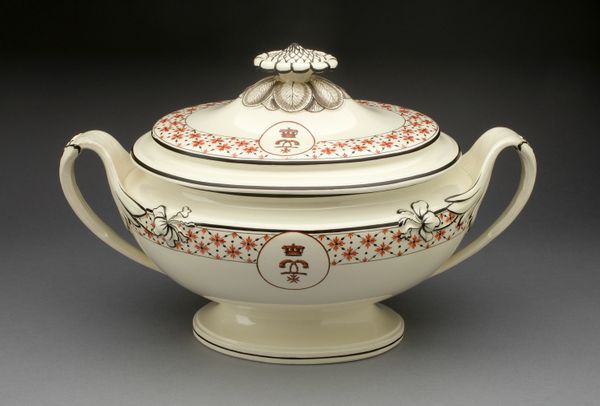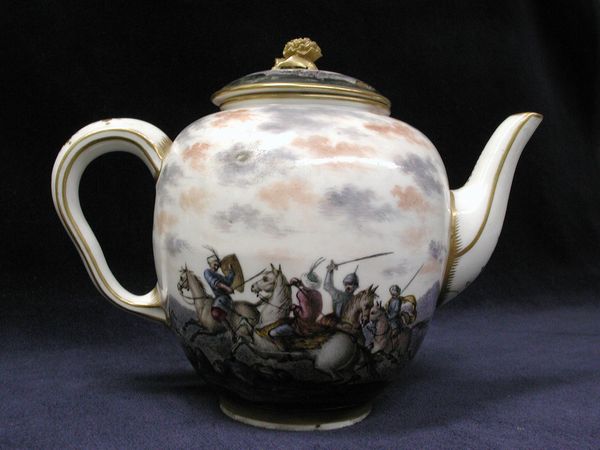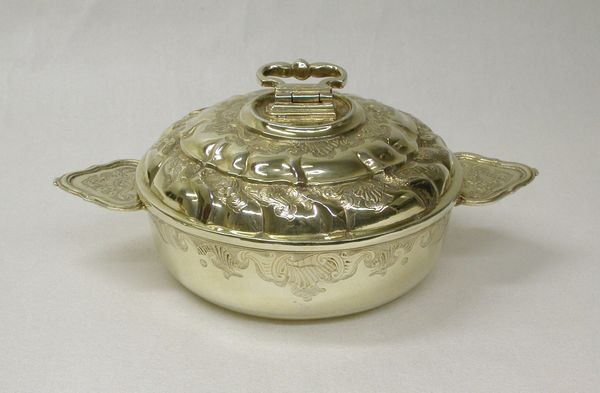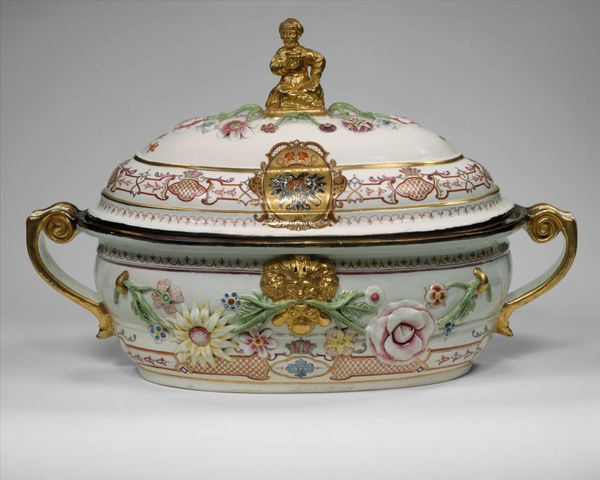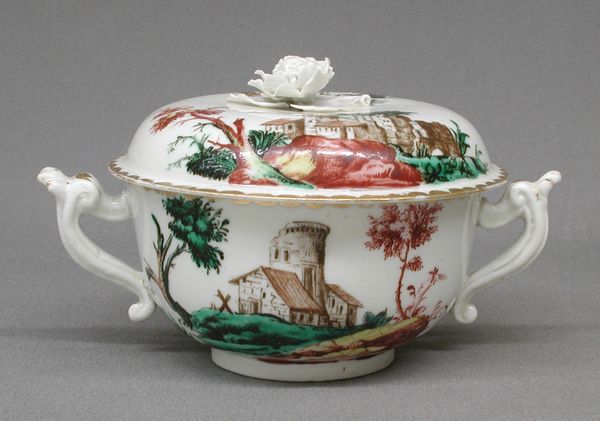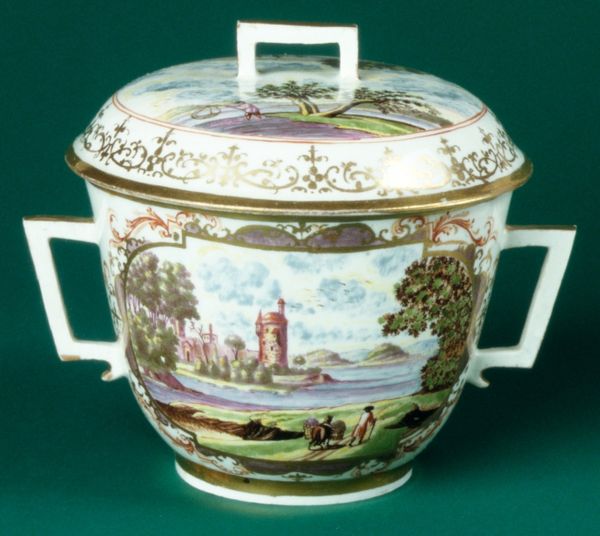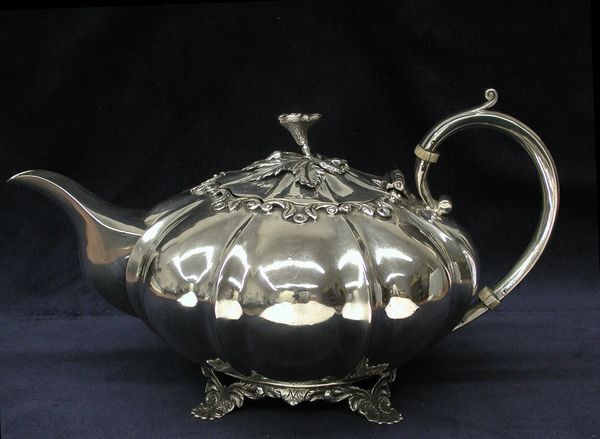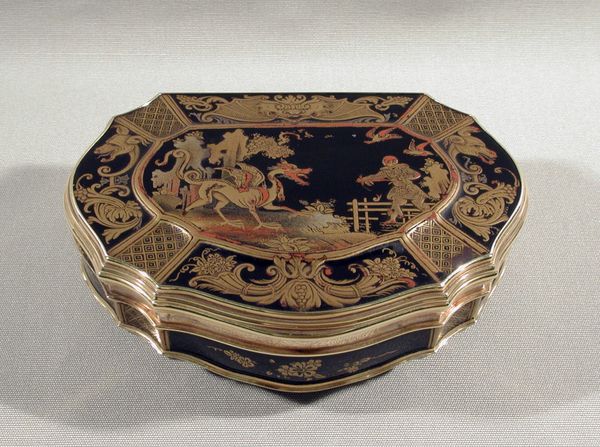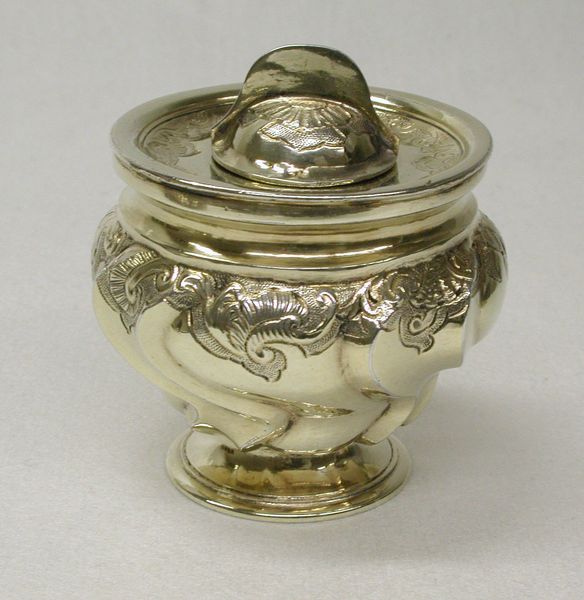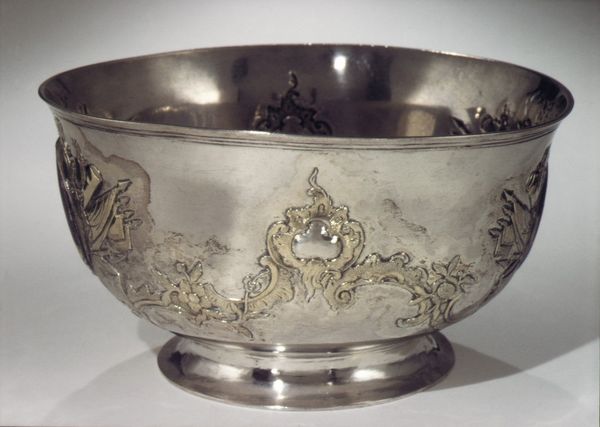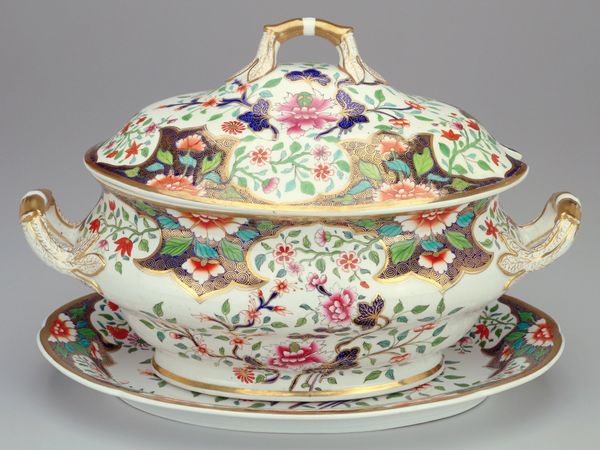
Bowl (part of a service) 1743 - 1759
0:00
0:00
painting, ceramic, porcelain, sculpture
#
baroque
#
painting
#
ceramic
#
porcelain
#
sculpture
#
ceramic
#
genre-painting
#
history-painting
#
decorative-art
Dimensions: Overall (with cover and handles): 5 × 7 1/8 in. (12.7 × 18.1 cm)
Copyright: Public Domain
Editor: So here we have "Bowl (part of a service)" made sometime between 1743 and 1759, made of porcelain at the Capodimonte Porcelain Manufactory. The details, both painted and sculpted, are so intricate! It depicts some sort of battle scene, which makes me think about stories being told and retold. How might the material—this delicate porcelain—impact the stories it tells? Curator: Excellent observation. The material here, porcelain, becomes a powerful signifier when considering the historical context of production. How would access to such refined materials like porcelain have influenced the manufactory's storytelling, considering labor, societal structures, and distribution networks back then? Editor: I guess I'm thinking about porcelain's association with luxury, as being available only to the wealthy. So the battle scene feels a bit... elevated, or perhaps romanticized because it is not depicting the reality or the hardship. Was the production of porcelain closely tied to specific patrons during that period? Curator: Precisely. The very act of creating something so elaborate from porcelain required significant investment in skill, time, and resources. Thinking materialistically, each brushstroke and sculptural detail reflect the social and economic framework within which the Capodimonte Porcelain Manufactory operated, it was inherently shaped by consumer culture and patronage. How does its intended use impact your interpretation of its imagery? Editor: It changes things! It wasn’t necessarily just art for arts sake; it was made for practical use for the upper class, which in turn further changes our understanding of the subject matter, because its purpose was maybe also to reflect luxury. I hadn’t considered how much the material shapes the message before! Curator: Exactly! Examining art through this lens allows us to question assumptions, deconstruct power structures, and understand art's complex relationship with broader systems of production and consumption.
Comments
No comments
Be the first to comment and join the conversation on the ultimate creative platform.

